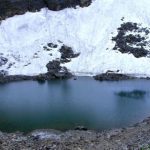 Weird Stuff
Weird Stuff  Weird Stuff
Weird Stuff  Mysteries
Mysteries 10 Tragic Disappearances and Deaths in Joshua Tree National Park
 History
History 10 Ways Childhood Really Sucked in the Old West
 Music
Music 10 Name Origins of Famous Bands from the 1990s
 Religion
Religion 10 Biggest Turnarounds by the Catholic Church
 Weird Stuff
Weird Stuff 10 Unbelievable Times Laws Had Unintended Consequences
 Humans
Humans Ten Historic Women Who Deserve Way More Credit Than They Got
 Movies and TV
Movies and TV 10 Films That Spawned Major Lawsuits
 History
History Ten Times Towns Were Wiped Off the Face of the Earth
 Creepy
Creepy 10 of the Most Disturbingly Haunted Public Houses in the UK
 Weird Stuff
Weird Stuff 10 Niche Subcultures That Are More Popular Than You Might Think
 Mysteries
Mysteries 10 Tragic Disappearances and Deaths in Joshua Tree National Park
 History
History 10 Ways Childhood Really Sucked in the Old West
Who's Behind Listverse?

Jamie Frater
Head Editor
Jamie founded Listverse due to an insatiable desire to share fascinating, obscure, and bizarre facts. He has been a guest speaker on numerous national radio and television stations and is a five time published author.
More About Us Music
Music 10 Name Origins of Famous Bands from the 1990s
 Religion
Religion 10 Biggest Turnarounds by the Catholic Church
 Weird Stuff
Weird Stuff 10 Unbelievable Times Laws Had Unintended Consequences
 Humans
Humans Ten Historic Women Who Deserve Way More Credit Than They Got
 Movies and TV
Movies and TV 10 Films That Spawned Major Lawsuits
 History
History Ten Times Towns Were Wiped Off the Face of the Earth
 Creepy
Creepy 10 of the Most Disturbingly Haunted Public Houses in the UK
10 Reasons Lake Lanier Might Be Haunted
Many consider a day at the lake one of life’s most relaxing experiences. However, a day at Lake Lanier in northern Georgia could quickly become something else. A little-known fact about this particular lake is the high number of lives lost to its deep, dark waters each year. A number that, when coupled with the disturbing history of the area, adds up to the long-held belief that the lake is cursed and that visitors should only enter at their own risk.
Ask a local official, and they’ll point out how no one has ever died while wearing a life jacket. It’s a fair point. But with so many deaths occurring and some under mysterious circumstances, one can’t help but wonder. Decide whether or not you believe the rumors after reading ten troubling facts about one of the deadliest lakes in the United States: Lake Sidney Lanier.
Related: 10 Weird Things Found at the Bottom of the Great Lakes
10 The Area Has a Tragic History
Until the mid-19th century, the Cherokee Nation inhabited the region of Forsyth County that would later become Lake Lanier. The U.S. government expulsed most of the members of the Cherokee people in the 1830s in what would ultimately become known as the southeastern-most origins of the Trail of Tears—”one of the worst human rights abuses in American history.” Another expulsion occurred in the same region eighty years later. Only this time, a different community was the target.
After the Civil War, Forsyth County became home to many Black and white settlers. But that changed in 1912 after the assault and murder of an 18-year-old white woman named Mae Crow. A white lynch mob killed the suspect, 24-year-old Robert “Big Rob” Edwards, and then began to attack all the Black residents, forcing most to flee the county within about two months. The mob claimed the land through a legal process called “adverse possession.” Many believe these two unforgivable acts left a stain on the land that remains today.[1]
9 A Third Expulsion
Forsyth County saw one final expulsion when the United States Army Corps of Engineers decided to put a lake near Atlanta, Georgia, to provide hydroelectric power, water, and flood protection to nearby counties. In exchange for their farmland, the government offered money to the locals, many of whom had owned the land for generations and considered it priceless. “Anger, resentment, fear, anxiety, bewilderment and apprehension” were among the emotions stirred in residents at the relocation talk.
Around 700 families eventually sold 56,000 acres, which enabled a dam to be built on the Chattahoochee River to form the lake. Locals watched as everything “they had abandoned was covered by the rising waters” in 1956. Despite the government’s assurance that residents were receiving the total value of the land and buildings, some families came to regret their decision once they found they couldn’t live off of what the government offered.[2]
8 Unmarked Graves Beneath the Lake
The Army Corps of Engineers removed everything they considered dangerous in preparation for the lake, uprooting trees, moving barns and wooden structures, and relocating bridges and water intakes. But the community also contained a cemetery. According to Cesar Yabor, a U.S. Army Corps of Engineers spokesman, the Corps identified and moved marked graves, but some unmarked graves were likely left behind.
“While the Corps made every effort at the time to locate unmarked burials,” said Yabor, “the limited capabilities of the time make it probable that unanticipated finds of human remains are possible, whether from the antebellum and Civil War periods or of Native American origin from pre-colonial and ancient times.”
Gradual flooding covered these graves over many years until it eventually became the largest lake in Georgia. Today, Lake Lanier provides drinking water for more than 5 million people.[3]
7 The Many Deaths at Lake Lanier
Five hundred people have died at Lake Lanier since its formation, with 200 deaths occurring between 1994 and 2022. The lake receives around 11 million visitors annually, but its popularity doesn’t explain the extraordinary number of deaths. Forty miles to the west sits Lake Allatoona, which sees nearly the same number of visitors yearly but only one-third of the deaths. It is impossible to predict precisely how many lives will be lost at Lake Lanier each year: Six people drowned in the lake in 2022, four in 2021, and seven in 2020.
The only statistic more shocking is when seven people died in a single day. Known as the deadliest day in the history of Lake Lanier, seven members of two Gainsville, GA, families passed away after their station wagon crashed down a 30-foot ((9.1-meter) embankment and plunged into the lake on Christmas Day, 1964. According to reports, the car clipped a guard rail and hit a power pole so hard that it snapped in half. Some passersby and divers from the fire department jumped into the cold water to help, but visibility was nearly zero.
Mr. and Mrs. Johnny Brown died in the accident, as well as three of their four children. Mr. and Mrs. Billy Rodgers also lost two of their children. According to Mrs. Rodgers, the two families had been headed to an orchard to pick apples for Christmas dinner.[4]
6 The Lady of the Lake
One night in 1958, Delia May Parker Young and Susie Roberts left a local dance together. When they stopped for gas, they decided to skip out without paying. Their impulsive decision likely impacted their speed as they crossed a bridge over Lake Lanier too quickly, causing their car wheels to skid off the road and sending them into the cold, dark waters below. Their car sunk into the lake’s depths, where it remained for over three decades before being discovered by officials. Neither of the women survived the accident.
Over time, the tragedy morphed into a haunting legend: the Lady of the Lake. The legend surrounds a spectral figure, often described as a woman in a blue dress that matched Susie Roberts’s dress that night. The evil figure, typically spotted near the bridge, sans her hands, attempts to lure unsuspecting souls to share her fate: a watery grave. She snatches anyone who wanders too close to the water’s edge with her hand-less arms and drags them below.[5]
5 The Death of Kile Glover
In July 2012, Kile Glover, the son of Tameka Foster, a fashion designer and the ex-wife of R&B star Usher, was struck by a personal watercraft while he was sitting on an inner tube on Lake Lanier. Eleven years later, Foster collected over 2,500 signatures for a petition imploring officials to “drain, clean, and restore” Lake Lanier. The petition calls for essential safety improvements and removing hazardous debris and other obstructions from the lake.
“Draining, cleaning, and restoring Lake Lanier is not only necessary but also an opportunity to honor the memory of those who have lost their lives and prevent further tragedies,” Foster wrote in her Change.org petition. She also promoted the petition on her Instagram page. Foster shared her son with Bounce TV founder Ryan Glover. Kile was 11 years old at the time of his death.[6]
4 The Disappearance of Kelly Nash
Kelly Nash disappeared on January 5, 2015. His girlfriend, Jessica Sexton, informed police that Nash woke up at 4 am that morning in their home in Buford, GA, coughing, sneezing, and feeling unwell. When she woke again a few hours later, Nash was gone. His truck, wallet, and cell phone were left behind. The only thing missing from the home was a 9mm handgun.
Family, friends, and authorities tried everything to discover what happened to Nash, including offering a $50,000 reward. The only evidence found was a surveillance video from a local gas station recorded the night before his disappearance. In the video, Nash picked up a few items while on the phone with his girlfriend, but the recording showed nothing unusual.
A fisherman found Nash’s body in Lake Lanier on the evening of February 8, 2015. He was wearing the same pajama pants and dark shirt he’d had on in the surveillance video. Authorities discovered a gunshot wound on his body but ruled his death a drowning. After the month-long search, Alan Nash said of his son: “He saw what he wanted in life. He had figured it out and was working to get there. Strong relationships were what he wanted in life. Kelly wasn’t driven by money, but by doing things the right way.”[7]
3 Boat Collisions Plague the Waters
Boating is notoriously dangerous at Lake Lanier, especially during the summer months. At about an hour before midnight on June 17, 2012, a fishing boat crashed into a pontoon boat “basically head-on,” killing two boys. Rescuers found the body of nine-year-old Jacob Prince quickly, but deep water and timber at the bottom of the lake complicated the search for 13-year-old Griffin Prince.
Jacob’s mother and two other children sustained injuries in the collision. The fisherman, Paul Bennett, was charged with boating under the influence, reckless conduct, and failing to offer help after the incident. More recently, a 10-year-old girl broke her leg and had to be flown to a local hospital after two boats collided in the lake in June 2023.
Not every boating accident at Lake Lanier happens in the summer. In January 2013, a fishing boat collided with a four-person shell called a “quad.” Luckily, no one was hurt, but all four rowers suffered varying degrees of hypothermia from exposure to the lake’s cold water. According to reports, the fishing boat operator took the blame, admitting he hadn’t been paying attention and couldn’t reverse in time to avoid the collision. The rowers were carried back to the boathouse by the same fishing boat that had sent them into the lake.[8]
2 Unexplained Boat Fires
Collisions aren’t the only thing boat enthusiasts need to worry about on Lake Lanier. There are also a surprising number of boat fires and explosions. On Mother’s Day in 2021, the Coleman family couldn’t start up their boat after refueling. The engine wouldn’t turn over. “We’ve never had a problem with this boat before,” said Steve Coleman. “I tried it one more time, and it just BAM.” Coleman’s teen son, Gunner, and daughter, Taylor, received extensive burns that required an airlift to the hospital. Taylor underwent at least three surgeries in her months-long recovery.
Another boat fire took place just two months later, on July 3, with two adults and two children on board. Both of the adults suffered severe burns that required immediate medical attention. Authorities continued to report a trend of boat fires at the lake, with five occurring between May 2021 and July 2022. A fire broke out at Lake Lanier’s Sunrise Cove marina on July 11, 2022, and destroyed three boats. For all of these and many other boat fires at the lake, officials did not find an immediate cause.[9]
1 Electrocutions on the Lake
Electrocution is another concern at Lake Lanier. On July 29, 2023, a 24-year-old man named Thomas Milner got electrocuted after jumping off his family’s dock into the lake. A family friend tried using a ladder to assist Milner out of the water but was unsuccessful. Neighbors approached in their boat, and one person jumped in the water to help. That person immediately felt a burning sensation they recognized as an electric shock. They swam ashore, turned off the power box, and returned to pull Milner from the water. Thomas made it out alive but succumbed to his injuries at the hospital the next day.
According to the Electrical Shock Drowning Prevention Association, an electric shock drowning occurs when an electrical current is leaked into surrounding waters. Even a low-level current through the body can cause muscular paralysis, rendering the swimmer incapable of helping themself out of the water. Typically, the electricity that enters the water originates from the wiring of the dock, marina, or boats connected to the marina or dock’s power supply.[10]








